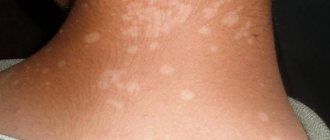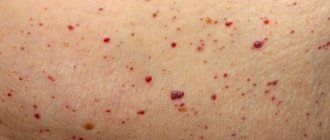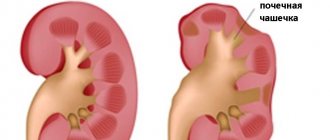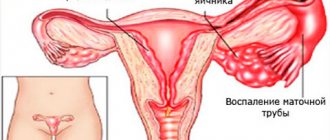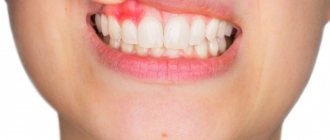Meibomitis is an ophthalmic disease in which the meibomian glands become inflamed. They are located in the thickness of the cartilage of the upper and lower eyelids. The disease is polyetiological. This means that there are many reasons for the development of meibomitis. Let's take a closer look at the factors that provoke this inflammation, symptoms and methods of treating it.
Meibomian glands are modified sebaceous glands that are located on the edges of the eyelids, in the thickness of the cartilage. They were discovered by Heinrich Meibom, after whom they were later named. The glands consist of alveoli. They secrete a fatty secretion that lubricates the eyelids and protects them from wetting by tear fluid, which protects the eyes from drying out. There are approximately 20-30 alveoli in the lower eyelids, and 30-40 in the upper eyelids. Inflammation of the meibomian glands is called meibomitis, which can affect the upper and lower eyelids, one or both eyes. What causes it?
Causes of meibomite
The immediate causes of meibomitis are identified - causative agents of inflammation, as well as triggers - provoking factors. Often the disease occurs when bacteria enter the meibomian glands, predominantly Staphylococcus aureus. The cause of the inflammatory process can be pneumococci, streptococci and other bacteria, as well as mycoses, mites, and viruses. Conditions predisposing to meibomite should be considered:
- hypothermia of the body;
- failure to comply with hygiene rules, including when wearing contact lenses;
- respiratory infection;
- eyeball injury;
- other eye infectious diseases;
- poor nutrition, vitamin deficiency, weak immunity.
Pathogenic microorganisms and viruses enter the glands through the mouth of the excretory duct when scratching the eyelids with fingers or a handkerchief. You can also get infected with contact optics that have been poorly treated with a cleaning and disinfection solution.
Diet for meibomitis
Diet for eyes, nutrition to improve vision
- Efficacy: therapeutic effect after 2 months
- Timing: constantly
- Cost of products: 1800-1900 rubles. in Week
Dietary nutrition excludes the consumption of fatty foods and dishes, confectionery, ice cream, chocolate and other products containing sugar.
The diet should be enriched as much as possible with immunostimulating and tonic foods, herbal, green or other teas with ginger, including:
- nuts;
- garlic and herbs;
- pepper, broccoli, radish;
- seafood;
- apples and citrus fruits.
Symptoms of meibomite
The symptoms of the disease depend on the form of its course and the cause that caused it. Acute inflammation is characterized by severe symptoms. Such meibomitis is accompanied by an increase in body temperature and general malaise. Ophthalmological signs are as follows:
- redness and thickening of the eyelid due to increased blood flow at the site of inflammation;
- local flow;
- painful sensations in the eyelids;
- increased lacrimation;
- there is a translucent yellow formation inside the tissue, it is visible when the eyelids are turned outward.
Infiltrates resolve after a few days, and spontaneous opening occurs less often. The contents of the formation exit through the excretory duct of the gland.
Chronic inflammation is characterized by the formation of a chalazion, a benign lump in the cartilage of the eyelid. It is usually not painful and rarely opens. However, the danger of this course of the disease is that it can lead to the development of conjunctivitis and other ophthalmic pathologies, including impaired visual function. Chronic meibomitis in most cases occurs with very weak immunity, and also as a complication of the acute form of the disease. In addition to the formed hailstones, a person may be bothered by symptoms such as:
- tearfulness;
- blurred vision;
- thickening of the eyelids with slight redness;
- formation of yellow plaque in the corners of the eyes.
In rare cases, several hailstones are formed. They also represent a noticeable cosmetic defect. Inflammation can occur on both the upper and lower eyelids. Often pathology develops in only one eye. Meibomitis of the lower eyelid and meibomitis of the upper eyelid are accompanied by the same symptoms.
Causes and symptoms of the disease
The aggressive agent that causes this type of inflammation is Staphylococcus aureus. However, the disease can be caused by pneumococci along with streptococci. Bacteria easily penetrate the tissues of the visual organs when scratching the eyelids with unwashed hands instead of a handkerchief or with a dirty handkerchief. The symptoms of the disease do not depend on the type of pathogen; they manifest themselves in the same way - inflammation, redness, suppuration.
Inflammation of the meibomian glands is a disease beyond age. It affects infants, elderly people, schoolchildren, and middle-aged people. Young girls are most susceptible to infection due to improper use of cosmetics and insufficient eye hygiene. Those who constantly wear contact lenses are susceptible to pathology.
Children of school and preschool age often acquire coccal infection from dirty hands by rubbing their eyes with their fingers. In old age, infection easily penetrates the visual organs due to a decrease in the body's protective functions. In men, meibomitis is rarely diagnosed.
Provoking factors for the development of pathology:
- being in drafts;
- clothes out of season;
- failure to comply with personal hygiene rules;
- low immunity, frequent colds;
- monotonous diet, lack of vitamins;
- injury to the conjunctiva with contact lenses;
- any ophthalmological diseases.
Meibomite can appear due to acne and inflammatory skin diseases.
Meibomitis sometimes appears as a complication of stye or blepharitis, so any ophthalmological diseases should be cured completely.
Symptoms of pathology:
- heaviness in the eyelids;
- swelling and redness of the eyelid;
- burning sensation, itching;
- a feeling of sand that interferes with blinking;
- sticking of eyelashes after sleep.
Subjective sensations during inflammation are the same for everyone. Pain in the eyes when blinking, interfering sand, discomfort and decreased quality of vision. In the morning, it is difficult to open the eyes due to the glued eyelashes; you have to remove the dried secretion with a swab soaked in a sterile solution.
Diagnosis of meibomite
During the examination, the doctor must determine the cause of the disease. The method of treatment and the type of medications that will be used depend on it. So, for bacterial etiology, antibiotics and antibacterial agents are prescribed, for fungal infections of the eyelids, antifungal drops and ointments are used, etc. The following methods allow you to make an accurate diagnosis:
- microscopic and cultural studies of secretions;
- scraping analysis;
- slit lamp biomicroscopy;
- allergy tests;
- examination of eyelashes for demodicosis.
How to distinguish meibomite from barley?
These diseases are sometimes confused; meibomitis is even called “internal stye.” However, they differ in a number of ways. Pathologies are treated using different methods, so it is necessary to differentiate them. Barley is an inflammation of the eyelash follicle, and meibomitis is an inflammatory process in the thickness of the cartilage of the eyelid. The first is localized on its edge, and the second - on the inside. The barley stem is clearly visible. To detect the purulent head of meibomite, you need to turn away the eyelid. When the meibomian glands become inflamed, the abscess matures slowly—a week or two. Barley is developing rapidly. A purulent formation becomes noticeable within a day or two after the onset of the inflammatory process.
Diagnostics using medical equipment will allow you to accurately make a diagnosis. You cannot self-medicate. Some people begin treatment for a stye without knowing that they are developing meibomitis. This can lead to complications.
Treatment of meibomitis
This pathology is treated with the help of medications, physiotherapeutic procedures and surgical methods. First of all, it is necessary to destroy the pathogenic microbes that caused the inflammation. We are talking about viruses, bacteria, mycoses, etc. In case of allergies, contact of the patient with the allergen should be excluded. Medicines used for meibomitis have a local effect. Eye drops and ointments are prescribed to be placed under the eyelids.
Typically, inflammation occurs due to bacteria entering the meibomian glands. In such cases, antibiotics are used in ointments - gentamicin and tetracycline. For very severe inflammation, hydrocortisone-based medications are prescribed. These drugs are a type of steroid medication that have many side effects. Systemic antibiotics for oral administration are needed for severe illness accompanied by an increase in body temperature.
Regardless of the nature of the disease, eyelid rinsing solutions are almost always used. You can make them from Furacilin. A similar procedure is carried out each time before instilling drops and applying ointments. In addition to Furacilin, fish oil is used. They lubricate the edges of the eyelids. This allows you to gently remove crusts and pus.
Drug therapy
If the patient seeks medical help in time, meibomitis can be easily treated with classical methods of therapy at home. Treatment consists of:
- the use of drops and eye ointments;
- thorough sanitation of the eyelids with antiseptic solutions;
- strengthening the immune system.
At the very beginning of the onset of symptoms, it will be enough to use ordinary brilliant green - it is used to burn the edge of the inflamed eyelid. Together with brilliant green, the well-known Albucid ophthalmic drops are used.
During treatment for meibomitis, it is prohibited to use decorative cosmetics or wear contact lenses.
Before any medical manipulations, it is necessary to carefully prepare the eyelid - rinse, disinfect, and dry. But first you need to remove the dried secretion. To do this, carefully lubricate the edges of the eyelids with fish oil (dip a cotton swab into the substance). After this, dried crusts are easily removed from the eyelids.
Then the eyelids should be disinfected with an antiseptic: furatsilin solution is suitable for this. When the eyelids are dry, you can apply the ointment prescribed by the ophthalmologist:
- hydrocortisone;
- methyluracil;
- oletethrine.
Time-tested tetracycline ointment and gentamicin emulsion cope well with inflammatory purulent processes.
Many medications are contraindicated for pregnant women. Uncontrolled use of medications in the early stages of pregnancy is especially dangerous.
A pregnant woman should promptly notify the ophthalmologist about her condition so that the doctor can select alternatives to potent antibiotics. These can be homeopathic medicines or traditional methods of therapy.
It is recommended to alternate the use of ointments with instillation of ophthalmic solutions:
- penicillin;
- zinc sulfate;
- dexamethasone;
- erythromycin;
- others.
If the disease is accompanied by an increase in temperature, in addition to local therapy, internal antibiotic and antipyretic tablets are prescribed. Perhaps the body's reaction shows increased bacterial activity.
General principles of drug treatment of acute meibomitis
This form of inflammation develops quickly. Treatment must be started immediately, otherwise the risk of the disease becoming chronic increases. When treating an acute inflammatory process you should:
- prohibit various lotions and compresses from decoctions;
- use dry heat;
- apply physiotherapeutic methods;
- lubricate the affected area of the eyelid with an alcohol solution of 70% up to three times a day;
- instill eye drops at least three times a day;
- refuse eye baths;
- apply ointments before going to bed.
Treatment of the upper and lower eyelids is carried out using the same methods using the same drugs.
Traditional therapy
How were our ancestors treated when there was no official medicine yet? They used natural remedies - herbs, roots, fruits and berries. Some methods of traditional treatment are also used in official medicine, and the use of herbs has become widespread as an addition to the main therapeutic regimen. Also, a base of herbal extracts and extracts is used in homeopathy.
To relieve the symptoms of meibomitis, apply a gauze swab soaked in yogurt. Fresh plantain leaves applied to the affected eye help speed up healing (they must be thoroughly rinsed to remove dust). Extreme methods of treatment include smearing the edge of the eyelid with garlic juice (this is prohibited for children).
Physiotherapy for meibomitis
Positive dynamics are observed in the treatment of inflammation using hardware methods. As a rule, a course of UHF therapy or ultraviolet irradiation aimed at the eyelids is prescribed. In recent years, procedures such as:
- Helium-neon laser stimulation. Therapy using laser technology has analgesic, anti-inflammatory and regenerative effects. Opened ulcers heal faster. The risk of complications is reduced.
- Magnetotherapy. Magnetic fields directed to the eyelids by a special device help restore natural biorhythms in the tissues, normalizing their condition. After just a few sessions, the functionality of the meibomian glands improves.
Surgical treatment of meibomitis
If the abscess does not open spontaneously and increases in size, conservative therapy does not bring results, then there is a need for surgical opening of the pathological formation. The operation is performed on an outpatient basis. There is no specific preparation for it. The procedure is performed under local anesthesia. The opening of the abscess is carried out from the side of the conjunctiva along the main excretory duct of the gland. Today, such operations are performed using a laser. If, after surgical treatment, granulations occur that interfere with tissue healing, surgical removal is also indicated.
Does eyelid massage help with meibomitis?
If the meibomian glands are inflamed, you can do a light eyelid massage. It is carried out with special sticks, which are sold in pharmacies. This procedure helps remove secretions, relieve redness and other signs of the disease. Before the massage, it is recommended to drop an anesthetic into the eyes. Do not start doing this without your doctor's approval. He must show how the procedure is carried out correctly. It is advisable to do it daily in the ophthalmologist's office. In this case, under no circumstances should you open the abscess yourself. This can lead to infection of other structures of the eye and other complications.
Causes of inflammation of the eyelids
Inflammation of the eyelids can be caused by the following reasons:
- pathological activity of mites living in the skin (a common phenomenon when the immune system is weakened);
- allergic reactions to certain types of medications, plant pollen, food;
- viral and microbial infections in the body;
- chemical, thermal and mechanical eye injuries;
- disruption of the cardiovascular and nervous systems;
- endocrine and hormonal disruptions.
1 Diseases of the skin around the eyes and inflammation of the eyelids. Diagnosis and treatment
2 Diseases of the skin around the eyes and inflammation of the eyelids. Diagnosis and treatment
3 Diseases of the skin around the eyes and inflammation of the eyelids. Diagnosis and treatment
Prognosis and complications
The prognosis for treatment of meibomitis is favorable in most cases. The disease is treated for approximately 10-14 days. The main thing is to follow all the doctor’s recommendations and not abandon therapy, even if the symptoms disappear. Due to late treatment or its complete absence, complications are possible:
- keratoconjunctivitis is an inflammatory disease of the conjunctiva and cornea;
- orbital cellulitis - inflammation of the tissue of the eyeball behind the orbital septum;
- panophthalmitis - purulent and total inflammatory lesion of the entire eye;
- thrombosis of orbital veins;
- intracerebral abscess;
- meningitis.
Meibomite rarely leads to such serious consequences. However, it’s not worth the risk, so at the first signs of pathology, consult a doctor.
Bottom line
Meibomitis of the eyelids is a common disease that affects patients from infancy to old age. It is a disease of dirty hands, poor personal hygiene, as well as a weak immune system and poor nutrition. The disease is especially dangerous for young children who do not yet understand the importance of personal hygiene. At the first symptoms of eye disease, you should immediately go to an ophthalmologist. Only a doctor can distinguish meibomitis from barley; independent treatment of this pathology is fraught with the development of complications and transition to a chronic form.
Sources used:
- Ophthalmology. National leadership. - M.: GEOTAR-Media, 2014.
- S. N. Basinsky, E. A. Egorov. Clinical lectures on ophthalmology.
- Visual disability due to diabetes mellitus / E.S. Skorobogatova. - M.: Medicine, 2003.
- University of Nebraska Medical Center
Prevention of meibomitis
How to prevent inflammation of the eyelids? The causes and provoking factors of this disease were previously listed. Based on them, it is possible to formulate rules that must be followed in order to prevent the development of meibomite. Among them:
- careful care of contact lenses;
- maintaining hygiene;
- a ban on swimming in reservoirs with water that does not meet sanitary and hygienic requirements;
- proper nutrition and taking vitamins;
- use of high-quality cosmetics;
- control blood sugar levels in diabetes;
- timely treatment of all diseases.
MagazinLinz.ru team




